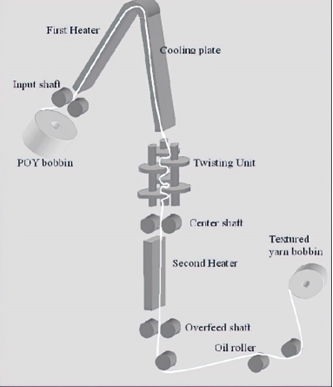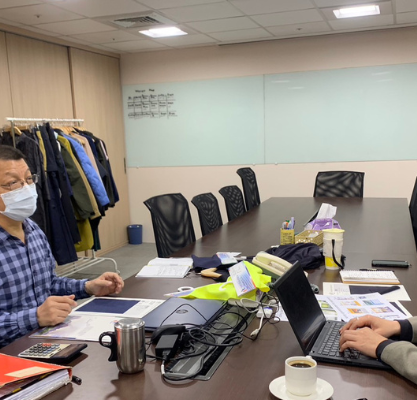Mechanical Stretch Fabrics In The Era Of Sustainability
In response to the growing trend of environmental sustainability, the development of stretch fabrics is leaning towards single-material solutions. Traditional stretch fabrics often incorporate polyurethane (PU), which is not environmentally friendly due to difficulties in garment recycling. While some companies are exploring using TPEE elastic yarn, mechanical stretch fabrics remain the mainstream choice. This article will introduce some of the most common types of mechanical stretch yarns.
Mechanical stretch yarns can be categorized into two main types: self-elastic yarns and mechanically processed elastic yarns.
Self-Elastic Yarns:
The primary materials for self-elastic yarns are PET (Polyethylene Terephthalate) and PTT (Polytrimethylene Terephthalate). These yarns are created side-by-side, combining two molecular structures to induce crimping and natural elasticity. PET has a linear molecular structure, while PTT has a serrated structure. When produced side by side, the difference in shrinkage rates between the two components causes the yarn to crimp. During the fabric dyeing process, the heat accentuates this difference in shrinkage. One of the most well-known examples of such yarn is Lycra’s T400, which can be found in more detail on their official website.
(https://www.lycra.com/zh-hans/business/search-technologies/lycra-t400-fiber)


Mechanically Processed Elastic Yarns:
The false twisting process is one of the most common methods for producing mechanically processed elastic yarns. This involves controlling the temperature, speed, and settings of rollers, heaters, and false twisting devices to achieve various levels of yarn crimping. Different crimping levels result in varying elasticity and tactile qualities.


False twist texturizing method of drawn textured yarn
Another less common type of mechanical
stretch yarn is high-twist yarn. This yarn is created by continuously twisting
until physical forces cause it to curl. While high-twist yarns possess
mechanical stretch, they tend to have a crisper feel and are typically used in
structured women’s apparel.
In the evolving landscape of stretch fabrics, understanding the characteristics of these mechanical stretch yarns becomes essential for manufacturers and consumers alike. These materials offer innovative solutions that align with the growing demand for sustainable and eco-friendly textiles.
You may also like





